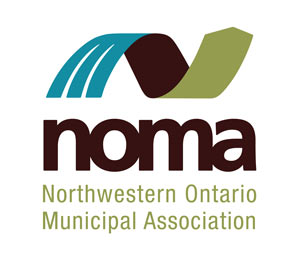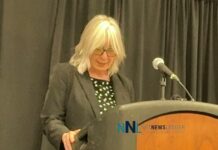 THUNDER BAY – The Northwestern Ontario Municipal Association (NOMA) provided its support to the TransCanada Pipelines Energy East Project at the Ontario Energy Board consultation held today in Thunder Bay.
THUNDER BAY – The Northwestern Ontario Municipal Association (NOMA) provided its support to the TransCanada Pipelines Energy East Project at the Ontario Energy Board consultation held today in Thunder Bay.
In its presentation, NOMA sited that shipping crude oil by pipeline is by far, safer than transporting by rail or truck. Of the 37 municipalities that belong to NOMA, 28 communities are located immediately adjacent to or are divided by CN and CP rail lines.
“There is a total population of 165,294 who live in our member municipalities directly impacted by rail lines,” said Iain Angus, NOMA Vice President adding that this number increases with the inclusion of First Nations communities and unincorporated areas. “We are all aware of the tragic events that occurred in Canada over the last year. As municipal leaders, it is our responsibility to minimize dangers to our residents and moving crude oil underground certainly reduces that risk,” added Angus.
The Energy East Project would move crude oil utilizing an existing natural gas pipeline located underground. The only above ground pipe is located at pump station sites, valve station sites, metering facilities and tank facilities.
“From our perspective, that significantly reduces the threat to the environment,” said Angus. “We do suggest however, that TransCanada Pipelines commit to installing valves on both sides of significant water crossings; ensure that the pipeline will be shut down at the first sign of a potential problem and conduct frequent inspections.”
NOMA also used this time to encourage the Ontario Energy Board to recognize the power requirements of this project. Angus pointed out that once this project is approved, it will require nearly 110 MW of electrical power. “With 11 pumping stations located 100 km apart trying to connect to the grid, that’s 110 MW of power that we do not have here in the Northwest today. Demand for power is growing as a result of the emerging mining industry and a resurgence in forestry. We urge the Ontario Energy Board to expedite applications submitted for power generation or transmission to ensure that the power is there when it’s needed.”






